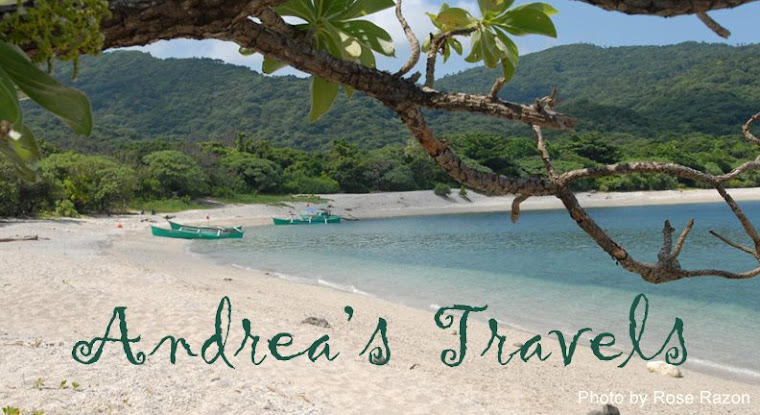

I just came back from a week-long trip to Batanes. It was a tiring but very enriching trip. My body still aches from the uphill walks and the unbelievable 3-hour trip in the high seas to Itbayat -- the farthest inhabited island in the northeastern part of the country. But the biiiiigggg waves was peanuts compared to our "landing" in this coral island. (This will be in another blog.) So much have been written about Batanes. But you cannot completely comprehend the superlatives until you immerse in their culture. Then you'll understand that some superlatives are understatements.
I want to share an article I wrote for PDI which came out last Sunday. We have so much to learn from the Ivatans. This is just one aspect of their culture. I hope to share some more in the coming days. (Above photos: Racuh a' Payaman in Mahatao town and the famous Valugan boulder beach in Basco.)
Ivatan of Batanes share secrets of survival in typhoon belt
By Andrea Trinidad-Echavez
Philippine Daily Inquirer
BASCO, BATANES -- IT IS SAID THAT NO ONE dies in a typhoon in this so-called typhoon capital of the Philippines.
As “Frank” started to threaten the rest of the country a week ago, 85-year-old Carlos Balasabas confidently went about his usual routine.
He led his carabao to the payaman (communal pasture) to graze, and patiently waited until it had its fill, never mind if over the radio, the weather forecaster had said Signal No. 3 would be raised over Batanes.
Going by the signs of nature, Balasabas knew that Frank would not hit the province.
“You will know there’s a typhoon coming when the cows at the payaman come down to seek shelter,” he said.
The payaman is usually located on the higher slopes of Batanes. When a storm looms, cows instinctively take shelter. They return to the hills only when the rain and wind have died down.
For generations, the Ivatan, as the people of Batanes are called, have relied on cows and natural signs for “weather forecasts,” according to Gov. Telesforo Castillejos.
“But cows are the most reliable,” he said.
Birds, the wind, cloud movement, and the color of the sky are also indicators of the weather in the days to come.
“When birds start taking cover inside houses or go down on the ground, or when the sky becomes pinkish orange, there is an imminent typhoon,” Castillejos said.
When the Ivatan see these signs, they start gathering their animals and stay inside their stone houses. No fisherfolk will dare go out to sea.
About 15 typhoons hit Batanes every year. Supertyphoons come once in about four years.
Scholars attribute the survival of the Ivatan to their communal values and their ability to master, rather than fight. their environment.
Vital statistics
Batanes, the little dot on the map at the tip of the Philippine archipelago, is made up of 11 islands and is fringed by the South China Sea to the west, the Babuyan Islands to the south, and the Pacific Ocean to the east.
It lies closer to Taiwan than to the Luzon mainland.
Located 860 kilometers from Manila, it is the least populated and smallest province of the country, occupying a total of 229 square kilometers with a population of a little over 15,000.
Florestida Estrella, 82, remembered how her parents gathered everyone in the kitchen every time a storm threatened Batanes.

The family would stay in the kitchen until the strong winds subsided.
“We can tell that a storm has ended by the sound of the wind,” Estrella said.
Most of the Ivatan, young or old, can tell the weather, according to Dr. Antonio Torralba, dean of the University of Asia and the Pacific’s College of Arts and Sciences, and a frequent visitor of Batanes.
Even days after Frank left the country, boatmen would not budge despite the pleas of stranded tourists to take them to nearby islands. And the fisherfolk, despite their mastery of the sea, stayed home.
“The sound of the waves is not good and whitecaps are everywhere,” said Robert Bastillo, a Manila-based Ivatan who came home to attend the province’s 225th founding anniversary on June 26.
Stone houses
“We Ivatan do not resist nature. We have learned to use it to our advantage,” said Governor Castillejos.
The stone houses, for instance—vahay in the local tongue—are a testament to the positive attitude of the Ivatan to adopt to their harsh environment, he said, adding:
“It is also living proof of their deep-rooted values.”
Building a stone house requires up to 50 tons of limestone carefully gathered near the shoreline. The roof is made of 47 cubic meters of cogon grass and about 8,000 reeds.
A house is built through payuhwan (cooperation).
“With the amount of materials needed to build an 8-meter-by-6-meter traditional house, it is impossible for a family to do it without the help of the whole community,” said Castillejos.
Learning from forefathers
The loss of lives in various parts of the country in the recent typhoons has made the new breed of Ivatan realize the importance of learning from their forefathers.
Recently, the provincial government launched a campaign for the preservation of the Ivatan’s old traditions. The campaign includes encouraging the elders to consciously teach the youth.
“Our forefathers survived the harsh conditions on the islands for centuries because of [the old traditions]. We may embrace modern conveniences, but we will keep holding on to old traditions to make life in Batanes more beautiful,” Castillejos said.
Copyright 2008 Philippine Daily Inquirer. All rights reserved. This material may not be published, broadcast, rewritten or redistributed.

No comments:
Post a Comment